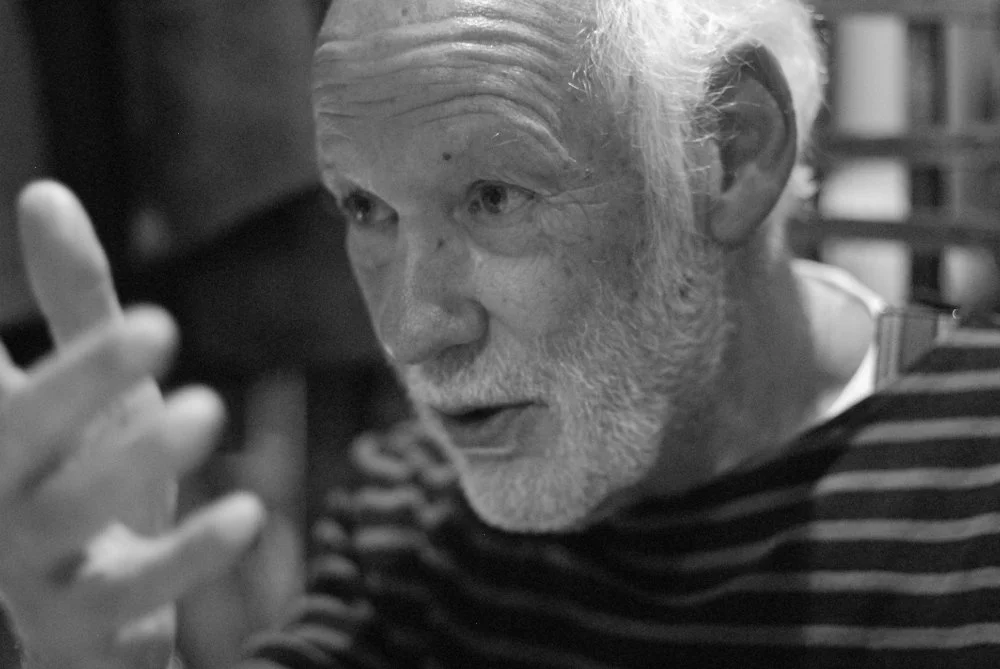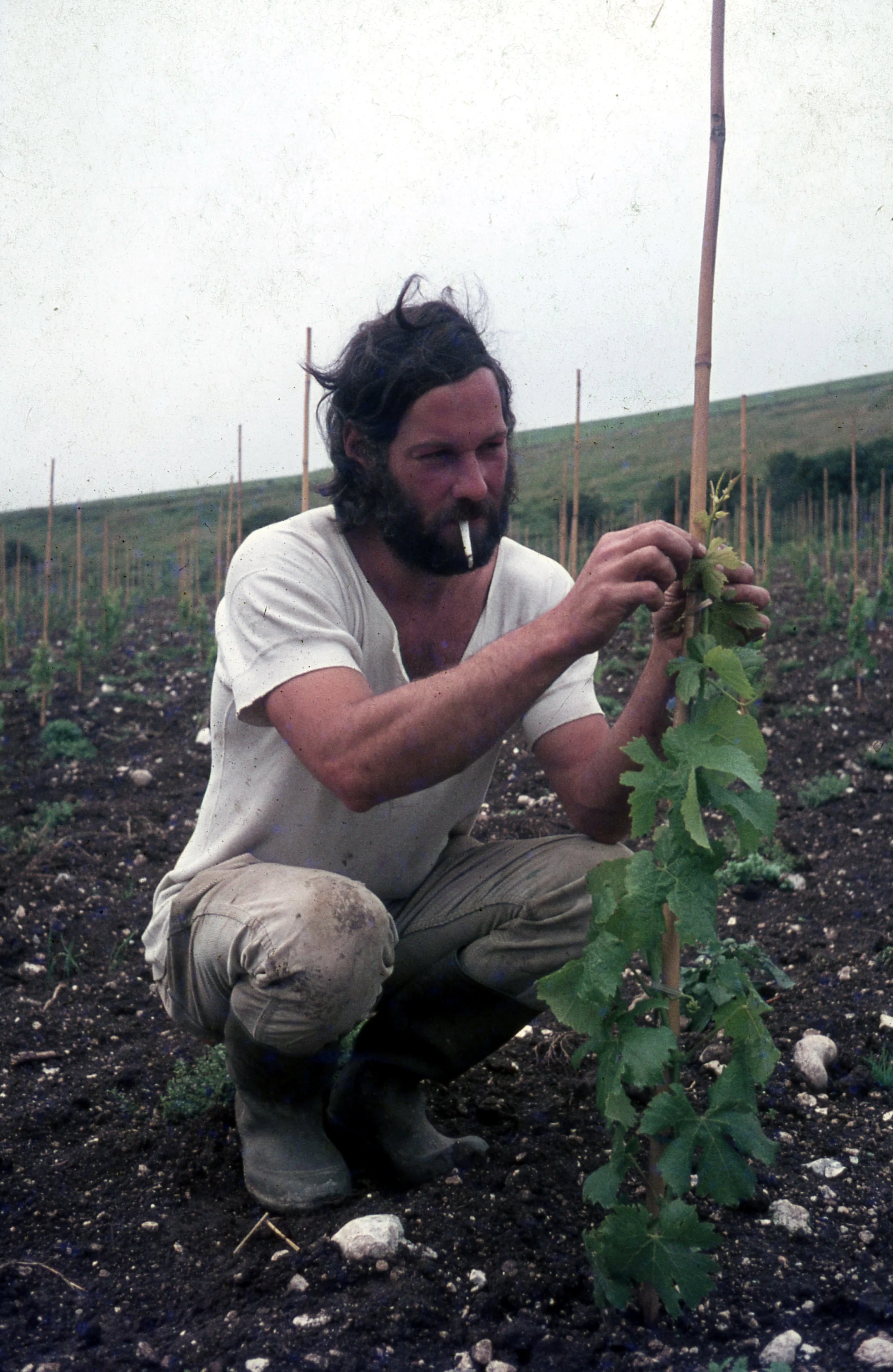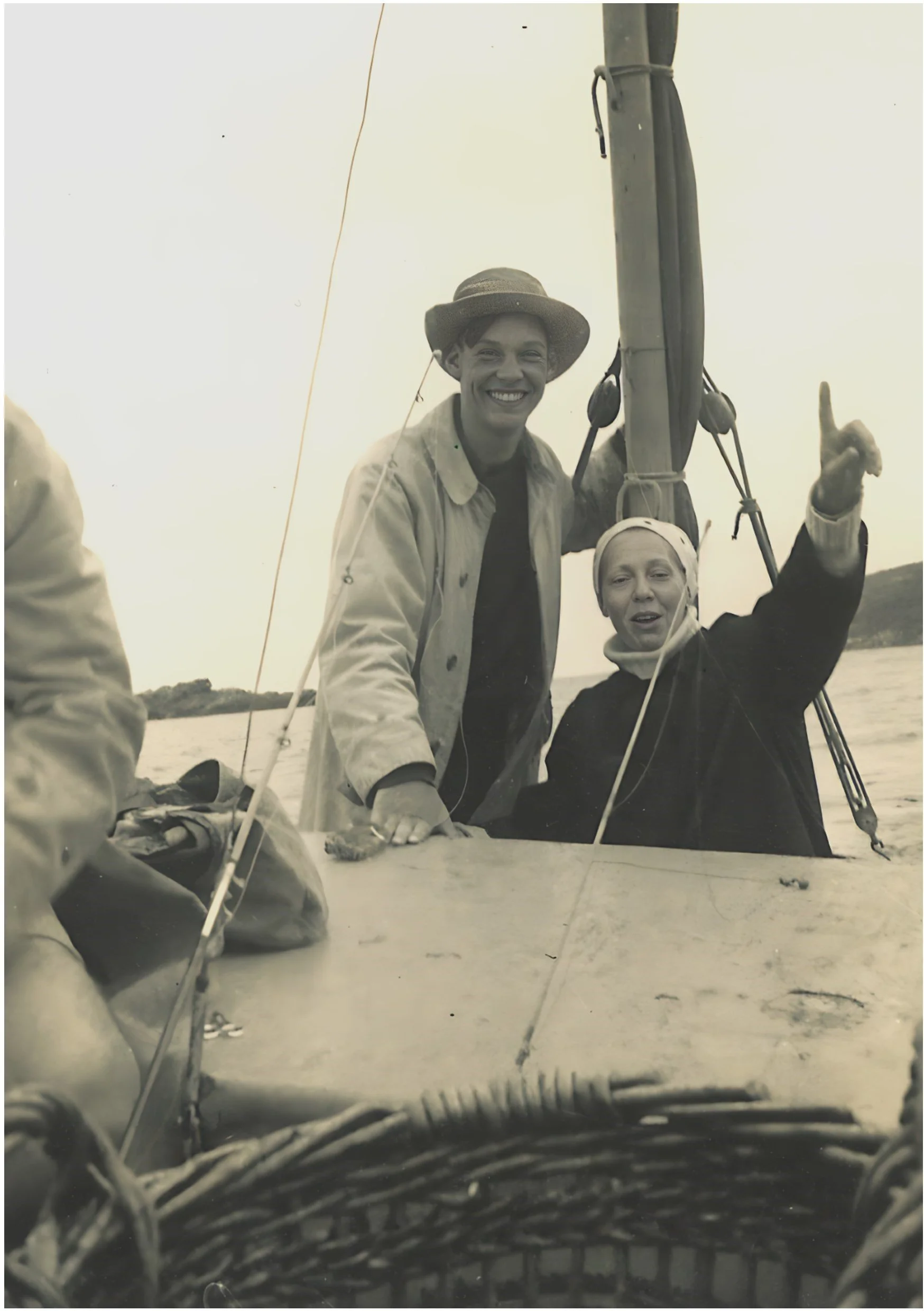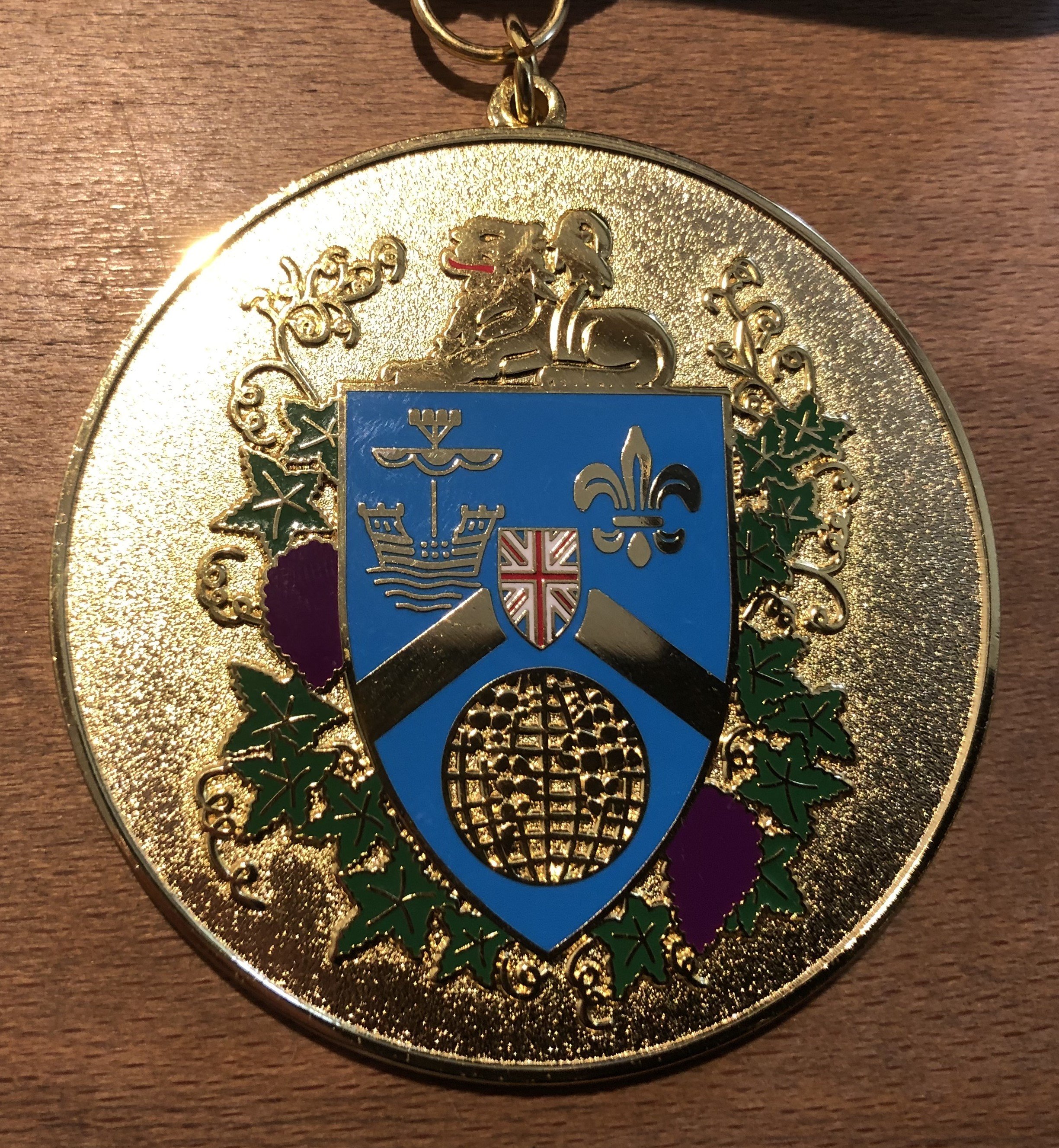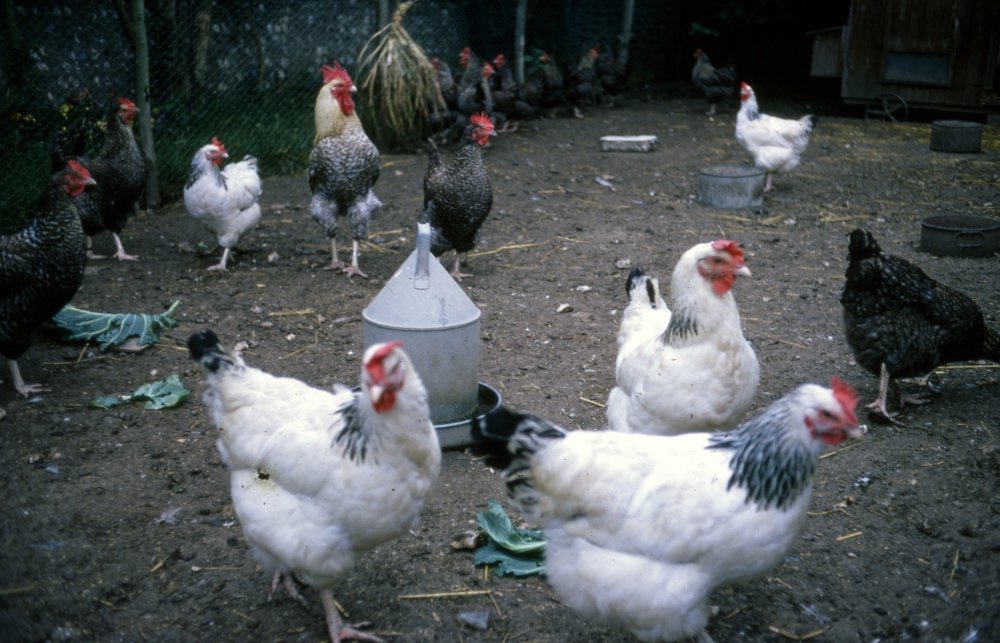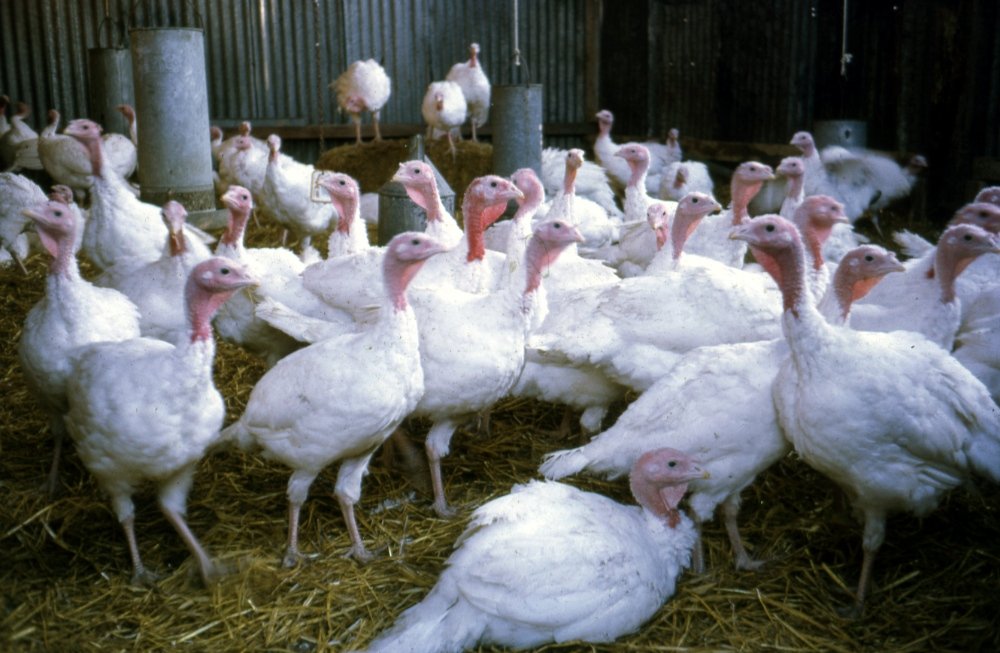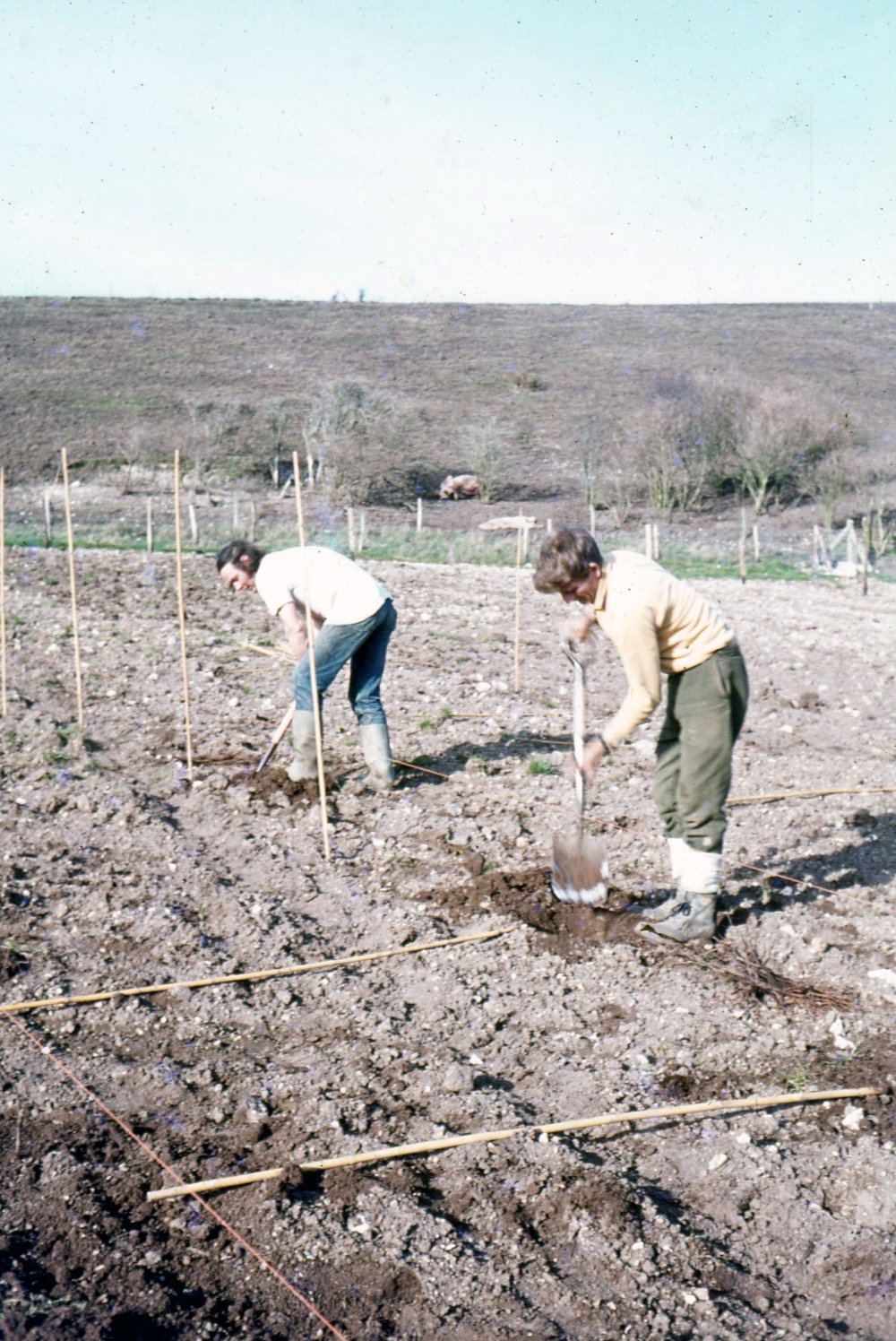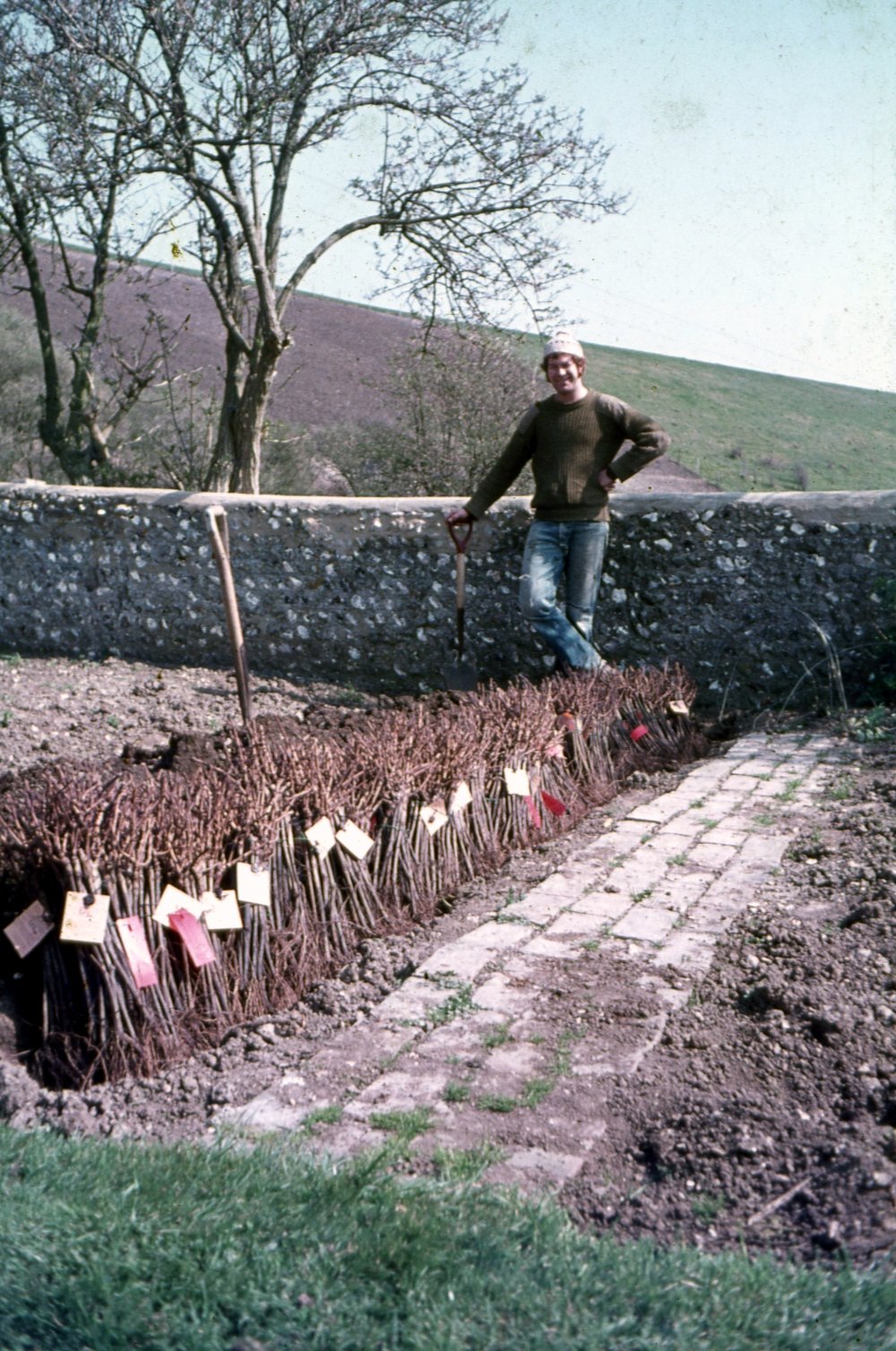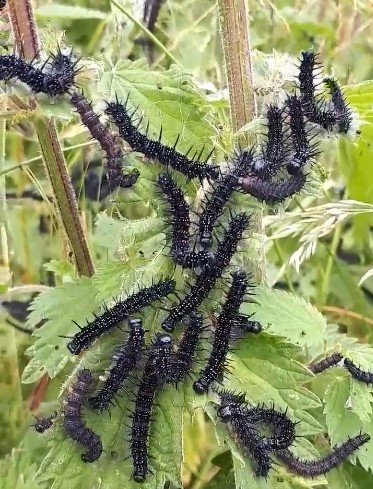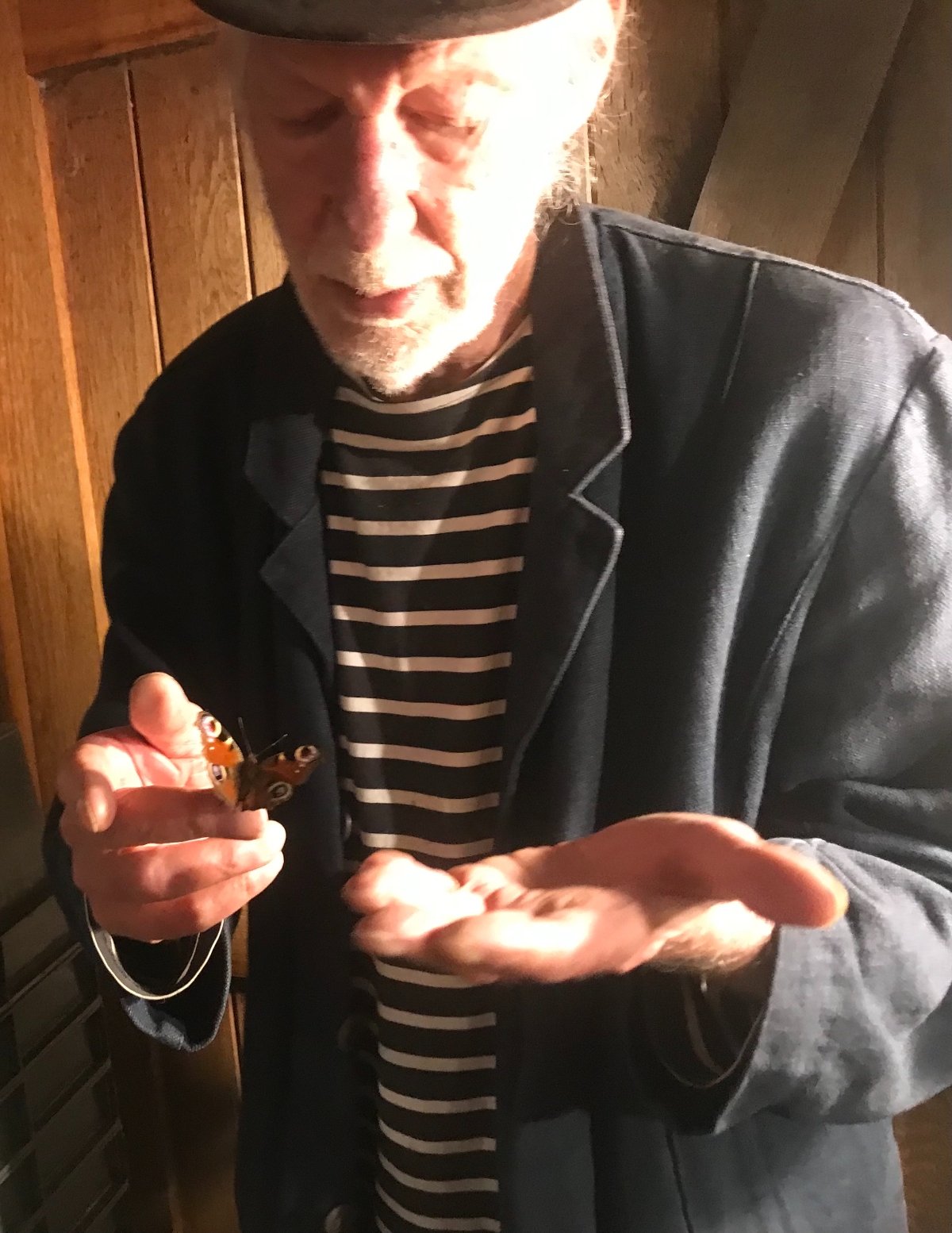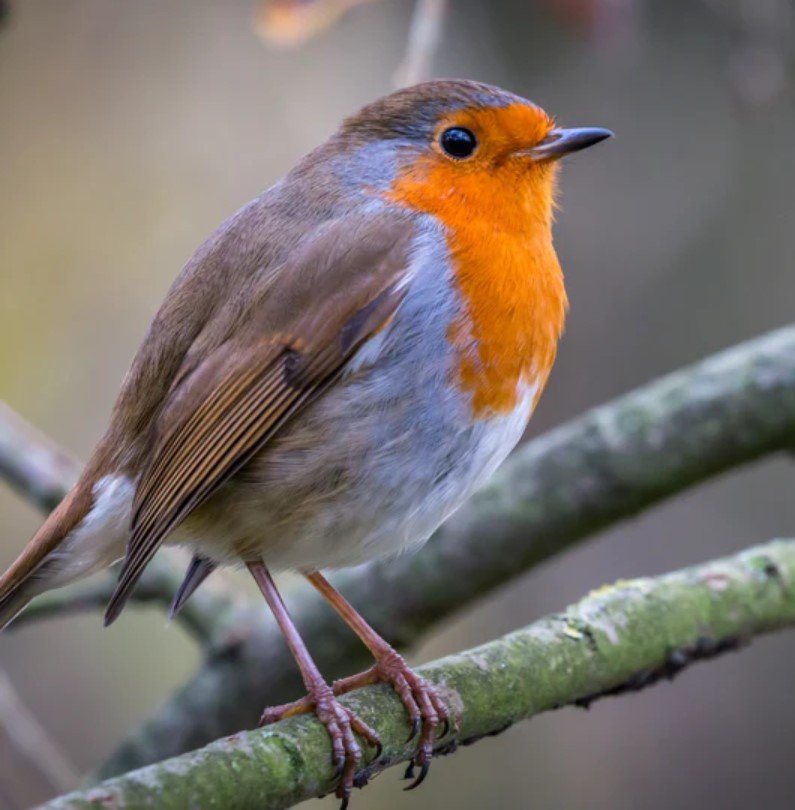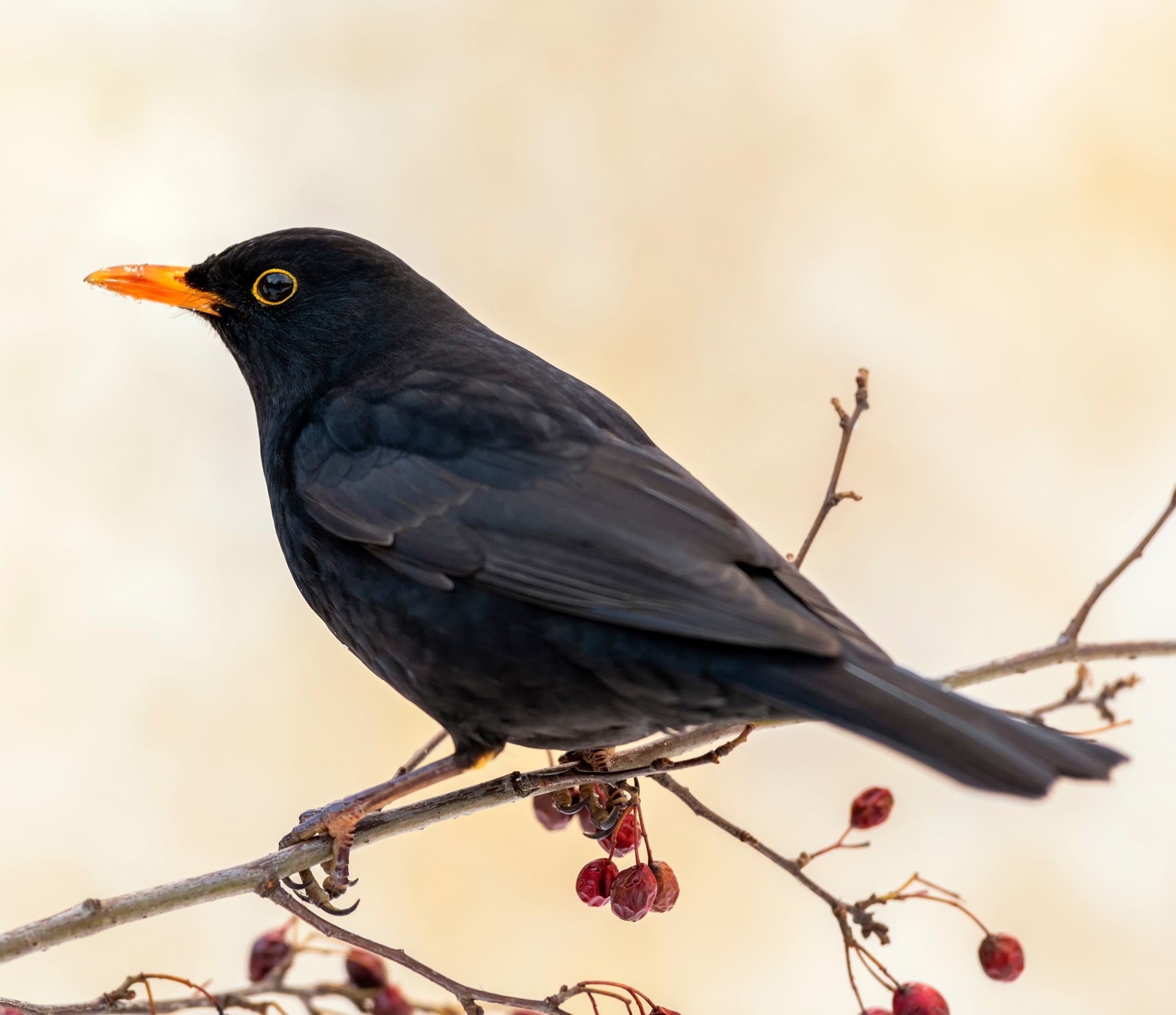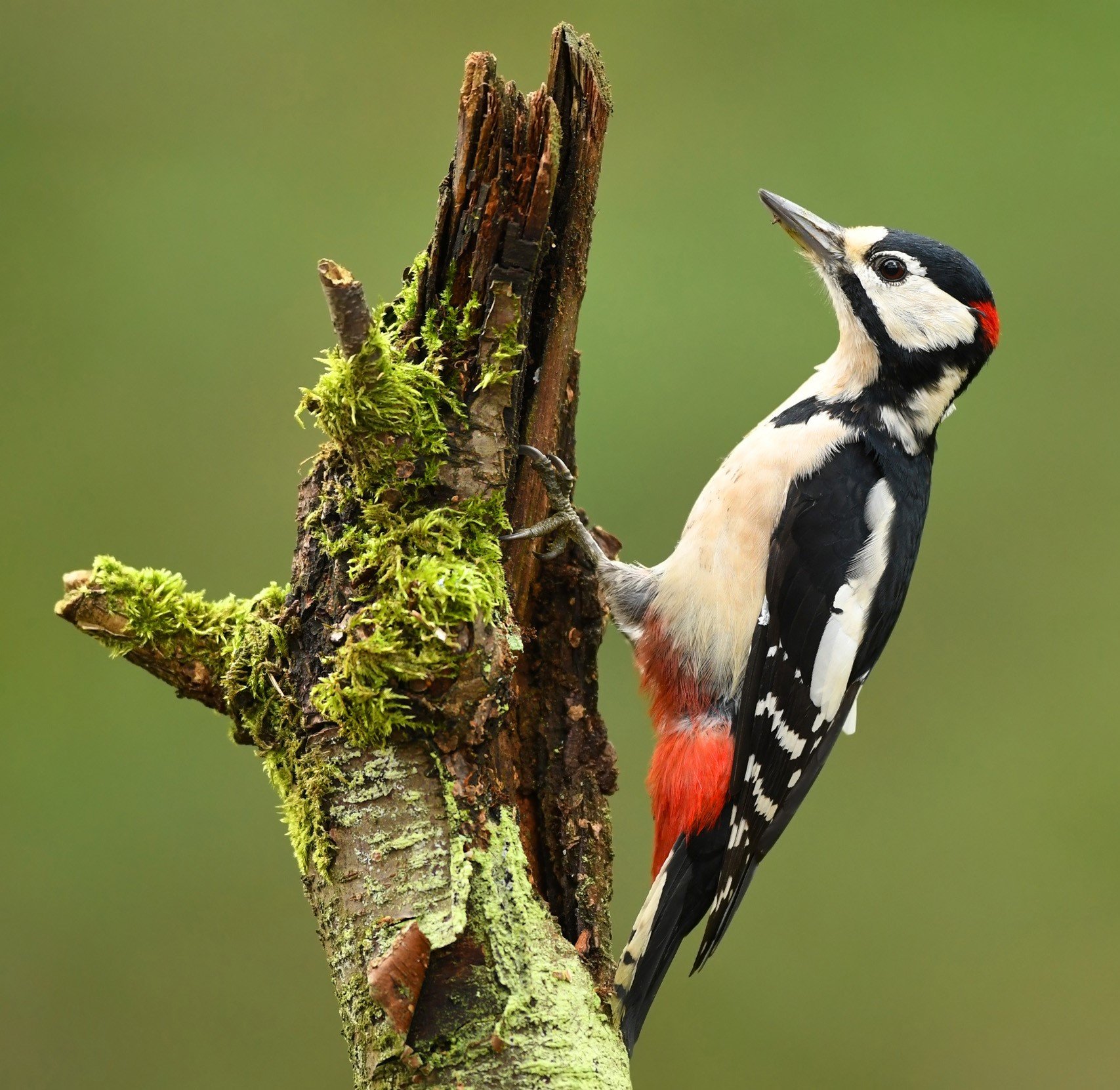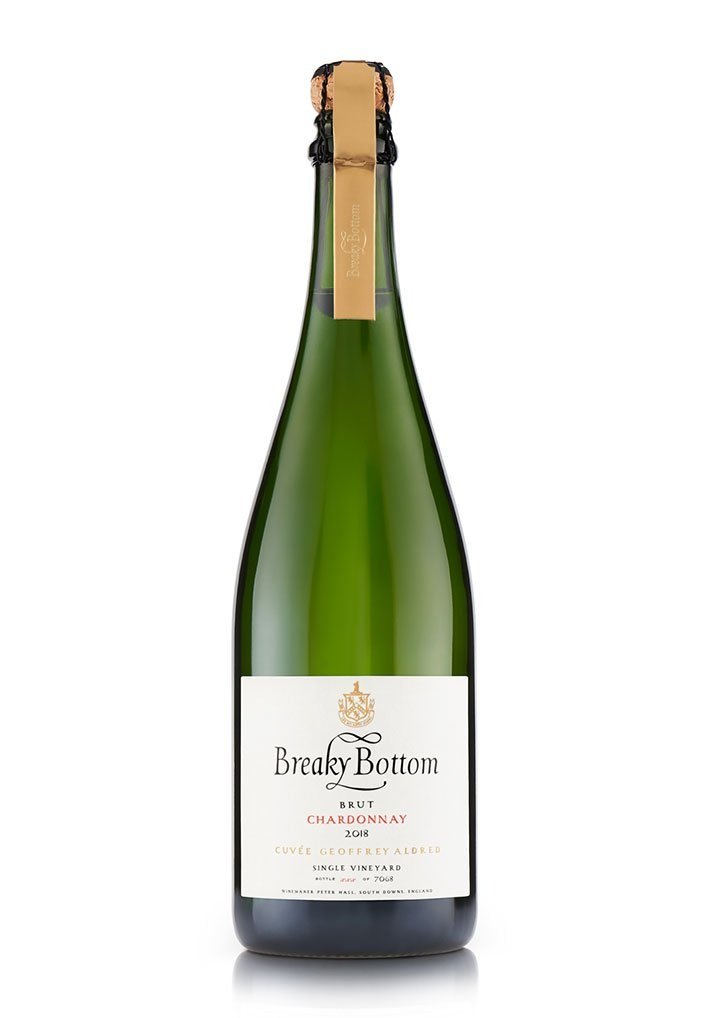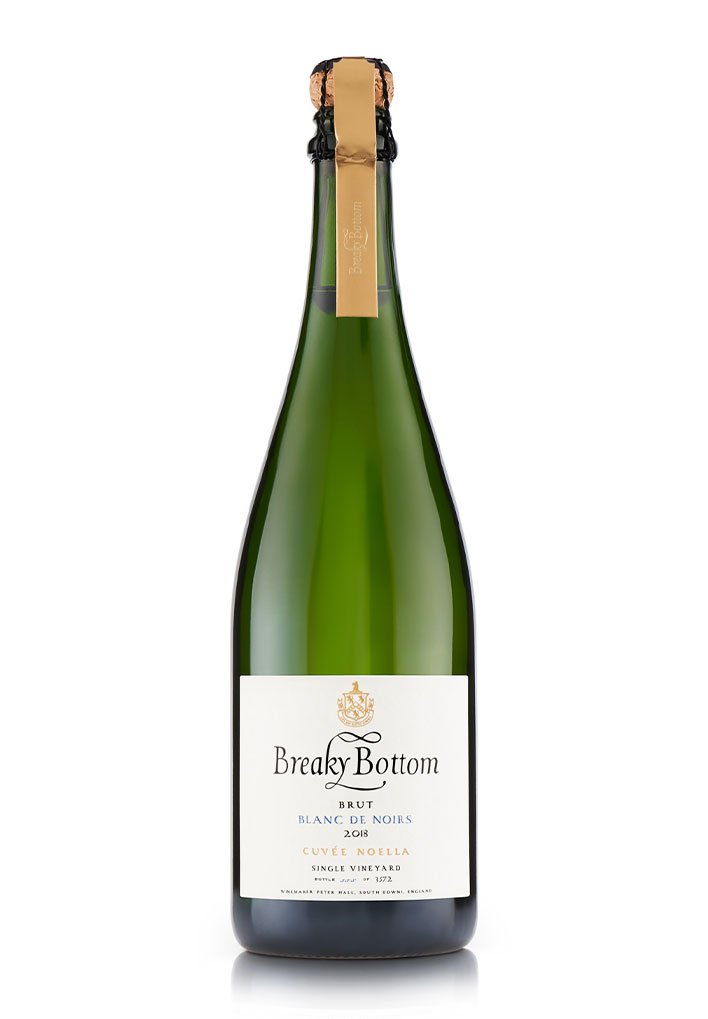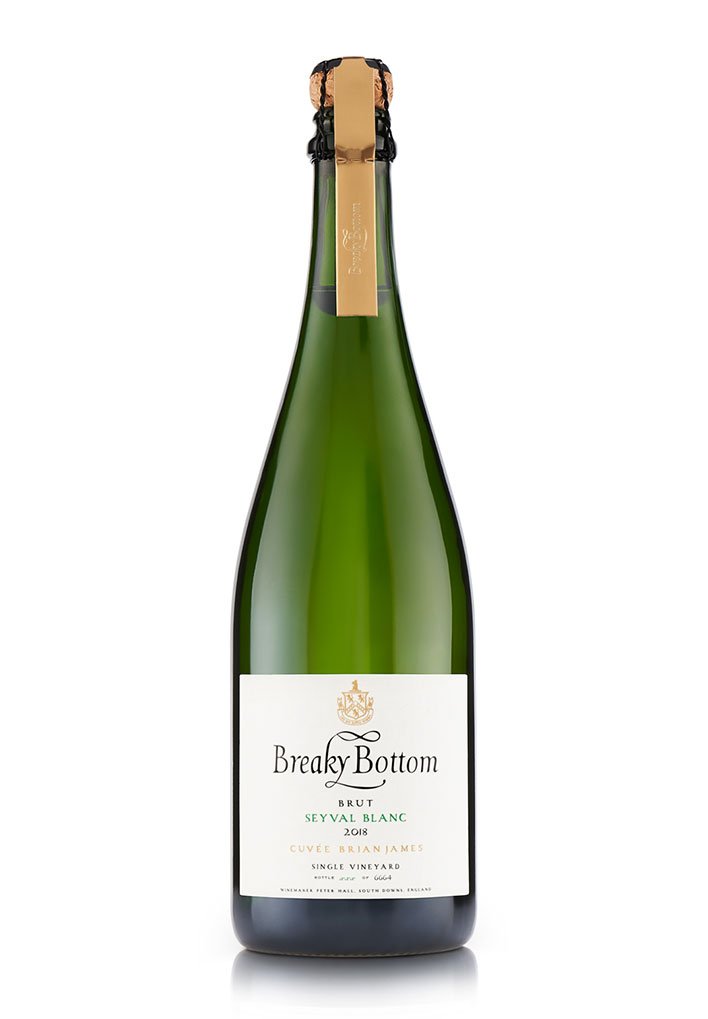Peter Hall Biography: 1943-2025
Peter Hall lived his life like a character from a Dickens novel: his fortunes were made and broken innumerable times across his long career as a pioneer of English wine. Peter took an empty and forgotten valley and, alongside his first wife Diana and the community they inspired, he turned it into a lush and Bacchic utopia. Breaky Bottom was a secret place: a slip between the Sussex hills that in time was filled with vine-rows, animals, art and culture.
As the years passed, Peter and Breaky Bottom endured floods, plagues of pheasants, soggy summers and fruitless harvests. Through it all Peter continued with his meticulous work: tending the vines by hand, labelling each bottle, ensuring that every aspect of the vineyard came under his design and his vision. In his later years Peter was internationally recognised as one of the foremost English winemakers of his generation, a legendary storyteller, and a lover of art and culture.
1. Background and Family
· Peter’s paternal family, the Inglis Halls, were well-off philanthropists at the start of the 20th century. Peter’s grandfather Tom Storey Inglis Hall had died in 1915 during the First World War, when his son – Peter’s father John – was only five years old.
· John Inglis Hall had a varied and accomplished career. A talented linguist fluent in German, he was selected by Churchill as a Special Operations Executive and worked undercover during the Second World War. Following this he became the head of Public Relations for English Electric, a role he balanced with his evening work as a popular writer of both fiction and non-fiction.
· The influence of Peter’s father lies partly behind his great love of literature. John’s short stories were regularly published in Argosy magazine during the 1950s, alongside contemporaries such as Ray Bradbury and John Steinbeck. His book ‘Fishing the Highland Stream’ is still regarded as a classic by the fly-fishing community.
· Peter’s maternal family were the Merciers, a French family that split their time between the continent and Britain. Their home was occupied during the Second World War and their collection of fine wines consumed by the enemy. It was in part from the Merciers that Peter learned to love and appreciate great wines.
· Peter’s grandfather Alex Mercier had run a high-end French restaurant (Le Petit Savoyard) in Soho, prior to the First World War. Alex moved back to France when Peter was young and Peter would visit Alex and his partner there.
· Peter’s mother Jeannine Mercier was born in Soho in 1914. In her lifetime both John and Peter regarded her as a saint, and Peter never had cause to revise this opinion.
· Peter’s great-great-uncle was Lafcadio Hearn, AKA Koizumi Yakumo, the acclaimed translator and compiler of Japanese folklore. Peter was always very proud of this connection, and named his 2010 Seyval Blanc Brut Cuvée in tribute to his distant relation.
· The comedian, musician and artist Gerard Hoffnung was a close family friend. Peter kept a Hoffnung self-portrait beside his armchair and was a keen collector of his works and promoter of his comic legacy. Hoffnung is another of the figures Peter memorialised through his cuvées, in this case the 2009 Chardonnay Pinot.
2. Childhood and Education
· Peter Anthony Inglis Hall was born in Rangeworthy Court, Gloucestershire, on 21 April 1943. He was raised in Notting Hill with his older brother Rémy and his younger brother Patrick.
· Peter regarded himself as a ‘born and bred’ Catholic, but not ‘active’. He was particularly fond of his namesake Saint Anthony, patron saint of lost things.
· As a child, Peter’s dream was to join the Royal Navy. He read books about Columbus and the great explorers, completed puzzles of wooden sailing boats, and floated his toy yacht at the Serpentine Pond in Kensington Gardens. This interest was fed by his eccentric great-aunt Princess Beatrice da Colonna a Montecchio (a former traveller in the Amazon who had broken her neck skinning buffalo in Canada, heralding her return to Britain), who supplied him with newspaper cuttings. At the age of ten Peter saw a newspaper advert for the modern Navy: a steel warship, a world away from Hornblower and the high seas. The interest died overnight, but Peter kept up the ruse for the sake of his aunt.
· Peter’s toy boat is featured in the opening scene of the classic film The Thirty-Nine Steps – he happened to be sailing it during filming, and was happy to grant a request from the production team to incorporate it into the scene.
· Peter and his siblings often visited Rangeworthy Court, their family’s country home and his place of birth. The working farm on the estate introduced Peter to animals and agriculture, and developed in him an interest that would direct the course of his entire life.
· At the age of six Peter and his brother Rémy were sent to France, to stay with a family friend. Peter found the experience difficult but it provided him an opportunity to perfect his French accent.
· Peter returned to England aged 7 to begin at boarding school – Barrow Hills and then St George’s College in Weybridge, where every year the students were required to watch Oliver Twist (1948) for the headmaster’s birthday. It was here that Peter met his (and his brother Patrick’s) lifelong friends Nick Lear and Richard Monje.
· On Peter’s first night of boarding school, his beloved wartime teddy-bear was unexpectedly beheaded. Later repaired by a kindly older boy, the bear has remained on Peter’s windowsill to this day, besides the ashes of his brother Rémy. Each morning Peter would greet them both. The bear was regularly maintained by his daughter Emily, but in recent years authentic replacement material proved impossible to source. Weathered and worn, the bear remained with Peter until the very end of his life.
· For Peter, his uncle Tony was the very model of an honest antique dealer. The next part of his education came in the time they spent together. Driving Tony on his rounds, Peter learnt to love rare and beautiful things, a love that survives in his brother Patrick, himself a successful antique dealer. Peter also credited Tony and his wife Janey with teaching him to drink whisky and smoke tobacco. Both remained consoling passions for the rest of his life.
· When Peter was 19, his family relocated to Fen Place Mill in East Grinstead. Keen to bolster his slim agricultural experience, Peter worked a trial week at Longleat where, to his surprise, he was selected to work with their pride of five lions. He did not return past this trial.
· Peter achieved two A Levels (Geography and Geology), which he failed initially due to a renewed interest in boating. With his retakes completed, he phoned Cambridge University to make doubly sure they would not offer him a place, before applying to study agriculture at his second choice, Newcastle. Once more Peter’s qualifications were against him but he travelled north to meet with an admissions officer, and talked him round into offering a place on the course. He went on to study in Newcastle from 1963-1965.
3. Life in Farming
· In 1967, Peter had moved back to Fen Place Mill, and was working at Northease Farm in East Sussex as a relief stockman and tractor driver. The position had been suggested to him by his friend Nick Lear, following Nick’s chance meeting on a train and a conversation with Diana Robinson, the farm owner’s daughter.
· Peter’s degree in agriculture gave him a theoretical grounding, but this was his first time working on an actual farm. He had never milked a cow, and traded information on skills like these with the other workers in exchange for poetry.
· On Peter’s second day, in pursuit of some lost ewes, he discovered the valley of Breaky Bottom, and a flint farmhouse that had lain uninhabited for decades. The nearby barn, also composed of flint, had been raised in 1827, and would one day become Peter’s winery, known as ‘The Opera House’. Peter was immediately struck, and asked the farm owner, Harris Robinson, for the land that same day.
· It was while working at Northease that Peter met Harris Robinson’s daughter Diana. Peter lived at Breaky briefly in the months that followed, before a return to the family home of Fen Place Mill.
· Diana and Peter were married in 1969 and took tenancy at Breaky Bottom: 30 acres, which Peter and Diana used as a mixed farm for livestock, primarily pigs. Their first children, Emily and Kate, were born in 1970, followed by Tom in 1971 and Toby in 1974.
· In springtime 1972, Peter was shopping in Elphick & Son in Lewes for seeds and plants. The nurseryman showed him a magazine with a back-page advert for two books by Nick Poulter: ‘Growing Grapes’ and ‘Wines from your Vines’. A visit to Breaky from Nick and his wife followed soon after.
· In 1974, the first vines were planted at Breaky Bottom by Diana and Peter. These were primarily Müller-Thurgau, with ‘nine good rows’ of Seyval Blanc also, along with Richtensteiner and Würzer. At this stage the vineyard totalled only four acres.
· Along with the first vines, the couple had to put in place the entire infrastructure of the vineyard. 1974 was a year of driving in end-posts and intermediaries, each laboriously punctured into the thickness of Sussex chalk. Soon the outline of a vineyard was raised across the land.
· In 1975 Peter began to transfer his focus towards viticulture and away from livestock. The pigs went that year, and the poultry soon followed. Soon he was a shepherd only, and his herd of sheep endured alongside the vineyard for the remainder of his life – another 50 years.
4. Career as a Wine-Grower
· Breaky’s first harvest came in 1976. Peter did not have the funds for any equipment so the crop was sent for processing at Lamberhurst, then the UK’s largest vineyard. Despite this, Peter determined that one part of the crop would be vinified by him. He fashioned a grape crusher from a broomstick and a bucket, extracted the juice with a hand-press and fermented the result in oak barrels. He regarded the result as a decent ‘first attempt’. Peter’s career as a maker of still wines had begun.
· Peter’s subdivision of this batch proved a blessing in disguise, as Lamberhurst’s winemaker failed to deliver the dry white wine Peter had envisioned. Following this experience, wine production would swiftly move to Breaky Bottom itself.
· Soon after, at the encouragement of the wine chemist Mark Russell, Peter purchased six large fibre-glass tanks to allow fermentation on site.
· By 1978, Breaky Bottom had managed to obtain additional equipment, including an antique French winepress that was already over a century old. By 1980 the demands of production required this to be replaced with a larger Vaslin press.
· 1978 also brought with it the first of many setbacks: stray herbicide from a nearby farm destroyed the crop. The miserable summer weather of 1980 took another crop, and in 1981 more herbicide claimed a third. 1979 brought 3000 bottles, a shallow oasis in the desert of adversity.
· In 1979 Peter began replacing Müller-Thurgau with further Seyval Blanc, the hybrid variety he championed across his long career.
· In 1986/7 the vineyard was extended to six acres, of which 4.75 were Seyval. Peter also kept an experimental plantation which included Sauvignon Blanc, Chardonnay, Pinot Blanc and Pinot Noir.
· 1987 and 1988 brought further hard times, with no wine in the former vintage and 1000 bottles only in the latter. Peter was a self-professed pauper at this time and his fortunes were only saved by the excellent summer of 1989.
· Peter and Diana’s marriage came to an end during this period. In time Peter remarried Christine Lowe (known as Chris), and she became a full-time resident of Breaky Bottom.
· In 1993 Breaky Bottom won its first gold at the International Wine Challenge for Seyval Blanc. This was a hard time for Peter personally. His father John died in 1993 and his brother Rémy and uncle Tony died the next year.
· In 1995, Peter began his transition to sparkling wine. This first harvest was released in the year 2000 and dedicated to his mother, as the Breaky Bottom Millennium Cuvée Maman Mercier. 1995 saw another experiment from Breaky Bottom: the Müller-Thurgau vines had noble rot and Peter’s family suggested that on this occasion a sweet dessert wine be created to use this otherwise spoiled crop. This was the family’s one ‘sweet harvest’.
· 1995 was also the year that Peter purchased Breaky Bottom at auction.
· Around the turn of the millennium, Peter decided to plant blackcurrants and experiment with making cassis. This in turn grew into the beloved Breaky Bottom Kir Royale.
· Over the next three decades Peter went on to enjoy widespread acclaim for his sparkling wines. He averaged 10,000 bottles per year, with peaks of 20,000. In time he fully replaced the Müller-Thurgau vines to focus on Seyval Blanc and the noble champagne varieties.
· These decades were not without difficulty: setbacks and disasters plagued Peter, and he spent years mired in legal difficulties. Despite this, Breaky Bottom went on in this period to become a favourite of royalty, government, and countless people the world over.
5. Awards and Distinctions
· It would be tedious – and perhaps impossible – to list all of Peter’s and of Breaky Bottom’s accolades. Early signs of recognition are lost to time, and recent victories came so frequently that it can be hard to choose. We have however compiled a list of Breaky Bottom’s more recent medal and competition triumphs.
· In 2025, Peter received the Diploma of Honour from the Fédération Internationale des Confréries Bachiques (FICB), the first time it has been awarded to an English winemaker.
6. The Peter Factor
· Peter Hall was a unique winemaker. We consider this to be something of an understatement. His son Toby, in collaboration with Peter’s other children Kate, Emily and Tom, has written a brief description of Peter’s philosophy and his approach: the ‘Peter Factor’. It is this, in combination with the chalk soils and slopes of the farm, that has made Breaky Bottom wines renowned across the world.
7. Peter and Fishing
· Peter followed in his father’s tradition as a keen fly-fisherman. At school he would go river-fishing behind the cricket pavilion, partially as an excuse to smoke a covert cigarette, a plan that was ruined when others decided to follow his example.
· As a teenager Peter would travel to Scotland to fish with his family. Although a reluctant traveller in adulthood, Peter continued to visit the Truim and the land described in his father’s book Fishing the Highland Stream into his sixties. His love of fly-fishing was a passion Peter passed on to all his family.
· During the 1970s, the family lakes at Fen Place Mill became a popular fishing destination, not just for Peter and his family but for celebrities such as Sophia Loren and Sir Michael Hordern.
· For Peter, fly-fishing was an exemplification of his entire philosophy: an unhurried communion with the natural world, both solitary and communal, unconcerned with anything beyond the process and experience itself.
8. Peter’s Other Pursuits
· Peter was a great lover of orchestral and classical music. At boarding school his bedroom was situated above the music room, and he would lie there during the day to overhear the piano practice coming up from below. In the 1970s Diana and Peter invited an opera to be performed within the winery and soon there were full musical and artistic performances being staged at the vineyard, courtesy of the nearby artistic community.
· Peter also loved the early Blues movement and even wrote to Louis Armstrong, who replied, under the impression that Peter was a jazz performer known only as ‘Breaky Bottom’.
· Peter loved books and he loved poetry. Family favourites like John Inglis Hall, Lafcadio Hearn and Gerard Hoffnung rubbed shoulders on the bookshelves with Flann O’Brien, John Keats, Seamus Heaney, William Burns, Edward Lear and W.B. Yeats. He read devotedly to his children (although for a period he insisted on reading Edgar Allen Poe) and his rendition of The Hobbit was even transmitted to the next generation.
· Peter was a keen rower and Master of Boats at both school and university. His love of sport never ended. He was at his happiest listening to a five-day Test Match, played through the transistor radio hung about his neck on a piece of macrame string.
· Peter was a vocal defender of Ukraine and Ukrainian sovereignty. In his final years he was rarely pictured without a Ukrainian flag pin, and he did his best to incorporate his displeasure with Putin into media appearances.
· Peter had an unusual (and deeply-held) belief that there was an escaped puma stalking its way along the vines of Breaky Bottom. In 2014 the ‘puma’ repeatedly attacked a 2,500 litre domestic fuel tank, and Peter’s plot to find fame and fortune by capturing further attacks on film sadly came to nothing. When the tank was next filled, Peter discovered by happy accident that the driver was a big cat expert, who concurred with Peter’s suspicions.
9. Setbacks and Difficulties
· Despite critical acclaim and success, Breaky Bottom lived on a knife-edge for its early existence. It came close to the verge of bankruptcy on several occasions. Spray drift from an adjoining farm claimed two harvests, and there were flooding instances and crop damage from pheasants that took Peter several years to resolve and overcome.
· Peter managed every aspect of Breaky Bottom himself, and as the years passed he was increasingly reluctant to leave its valley. He has been variously described as a hermit and a recluse, but he was always pleased to receive visitors, both expected and unexpected. Peter’s storytelling abilities were well-known, and he became a familiar media presence, on television, radio and in print.
· Peter and Diana’s children were hugely engaged with Breaky Bottom throughout their lives, working with Peter regularly and supporting both Peter and Chris in their daily lives during more recent years. As a maverick and pioneer, Peter found it challenging to mix family with business. In the meantime, they found their own successes, although a full handover during his lifetime never came.
· Peter died peacefully early in the morning of 2 October 2025, following a short illness. His four children were all with him at this time.
10. The Breaky Bottom Community
· Peter was a prolific patron of art in all its forms. He was one of the four founding members of the New Sussex Opera, which first began as an in-house production at Breaky Bottom, with contributions from Joe Staines, Rebecca Meitlis, Nicola Lefanu, Nigel Kennedy, Keith Lewis, Joe Bearman, Nick Logy, the Endellion Quartet, the Chilingirian Quartet, the Hilliard Ensemble, and the visual artist Roger Dean.
· Breaky Bottom put on many summer exhibitions of art over the years, championing mostly local artists. These included Richard Long, Peggy Angus, Peter Gough, Stephanie James, Harvey Daniels, Antony Inglis Hall and Mike Patterson.
· Breaky Bottom thrives on community and there is no better illustration than the teams of pickers that arrive each year to help bring in the harvest, from keen amateurs and future friends to wine luminaries such as Stephen Skelton MW, Dermot Sugrue, Emma Rice, and Andrew Jefford. Other friends in the world of wine include Oz Clarke, Jancis Robinson MW and Jilly Goolden. There are too many names here to mention – so apologies for any omissions!
· In recent years, Peter’s one full-time employee has been Louisa Adams, who came as an amateur for one harvest and went on to become a professionally accredited viticulturist. Louisa gained Peter’s trust (no mean feat) and there are few others with her knowledge both of Breaky Bottom and of winemaking itself.
· Over the years Peter has nurtured many up-and-coming viniculturists and winemakers. He was always happy to share his knowledge, experience and passion, and it was occasionally hard to make him stop.
· Each of Peter’s cuvées are named after a person of special significance in his life. This tradition began in 2000 with his first sparkling wine, Maman Mercier. A list of the current main cuvées is available on the Breaky Bottom website (https://www.breakybottom.co.uk/cuvees), alongside Peter’s brief biographies of each eponym.
11. Family Today
· Peter’s younger brother Patrick is a successful antique dealer primarily working in France and the south of England. He has three children with his wife Didie: Jeannine, Antony and Anna Inglis Hall.
· Peter’s older brother Rémy was a respected translator of French literature. He moved to America aged 19 and died in New York in 1994, during the AIDS crisis. Peter and his mother were with Rémy and his partner Ronnie when he died.
· Peter’s first wife Diana lives in Dorset with her second husband John. She is an internationally respected authority on medieval tiles.
· Peter and Diana have four children: Kate, Emily, Tom and Toby. All four were by Peter’s side in his final months.
· Peter additionally has five grandchildren: Louis, Felix, Kit, Basil, and Phoebe.
· Peter is survived by his widow Christine Hall, a talented artist and teacher who co-founded Artemis Arts. Chris has two children, Danny and Keith.
· Peter and Chris doted on their Bengali cat Toto. Aged sixteen, today Toto is thin, a little ragged, but still the undisputed master of the house.
12. The Future of Breaky Bottom
· Breaky Bottom will continue to function as usual under the management of the family. We will consider long-term options at a future time.

